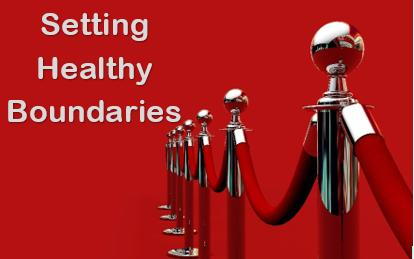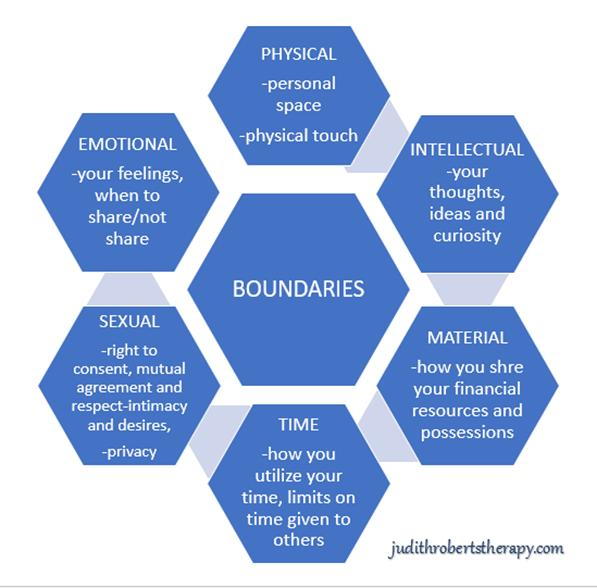
Boundaries are guidelines, rules or limits we put in place to protect our well-being. We all have an invisible wall, a boundary, which separates us from one another. Within this boundary is our individual safe space. We decide what is appropriate and what is safe. Boundaries help define who we are. Some boundaries may be loose, some may be rigid, others somewhere in between, or non-existent.
Boundaries keep relationships strong and healthy. Types of boundaries are physical, emotional, sexual, intellectual, time and material. There are also non-negotiable boundaries. These are must haves, not open to discussion or modification. They usually pertain to safety issues such as physical violence, emotional abuse, drug or alcohol use, fidelity, and life-threatening health issues.

Here are eight signs that you need to set healthy boundaries:
- You ignore your needs to avoid conflict.
- You do not speak your truth.
- You say “yes” when you want to say “no.”
- You have little to no time for yourself.
- You feel depleted for overextending yourself.
- You feel guilty taking ‘me’ time.
- You feel others take advantage of you.
- You feel responsible for solving others’ problems.
How to set healthy boundaries:
- Communicate - it is important to clarify what you need. It is okay to assert yourself, you are not being selfish.
- Define – identify what your boundaries are and be specific. They are not ultimatums nor threats.
- Implement – put into practice what you have identified and be consistent. If you do not follow through, others will not as well.
- Set consequences- explain why boundaries are important to you and what the consequences are. Make sure to adhere to those consequences.
Helpful boundary-setting sentences:
“I can’t do that, but I can help you find someone who can.”
“I can’t take on additional responsibilities right now.”
“I can’t attend but I appreciate the invitation.”
“I don’t feel safe, so I am going to leave.”
“I won’t be spoken to in that manner.”
“I’m allowed to change my mind.”
“Thanks, but I’m not interested.”
“I wish I could, but I can’t,”
“No, thank you.”
“No.”
Healthy boundaries allow you to:
• Have high self-esteem and self-respect.
• Share personal information gradually, in a mutually sharing and trusting relationship.
• Protect physical and emotional space from intrusion.
• Have an equal partnership where responsibility and power are shared.
• Be assertive. Confidently and truthfully say “yes” or “no” and be okay when others say “no” to you.
• Separate your needs, thoughts, feelings, and desires from others. Recognize that your boundaries and needs are different from others.
• Empower yourself to make healthy choices and take responsibility for yourself.
References:
Selva, J. (2018, Jan. 5) How to Set Healthy Boundaries. Retrieved from:
https://positivepsychology.com/great-self-care-setting-healthy-boundaries/
Katherine, A. (1994). Boundaries: Where You End and I Begin - How to Recognize and Set Healthy Boundaries. Center City, MINN: Hazelden Publishing.
Martin, Sharon. (2021). The Better Boundaries Workbook: A CBT-Based Program to Help You Set Limits, Express Your Needs, and Create Healthy Relationships. Oakland, CA: New Harbinger Publications.